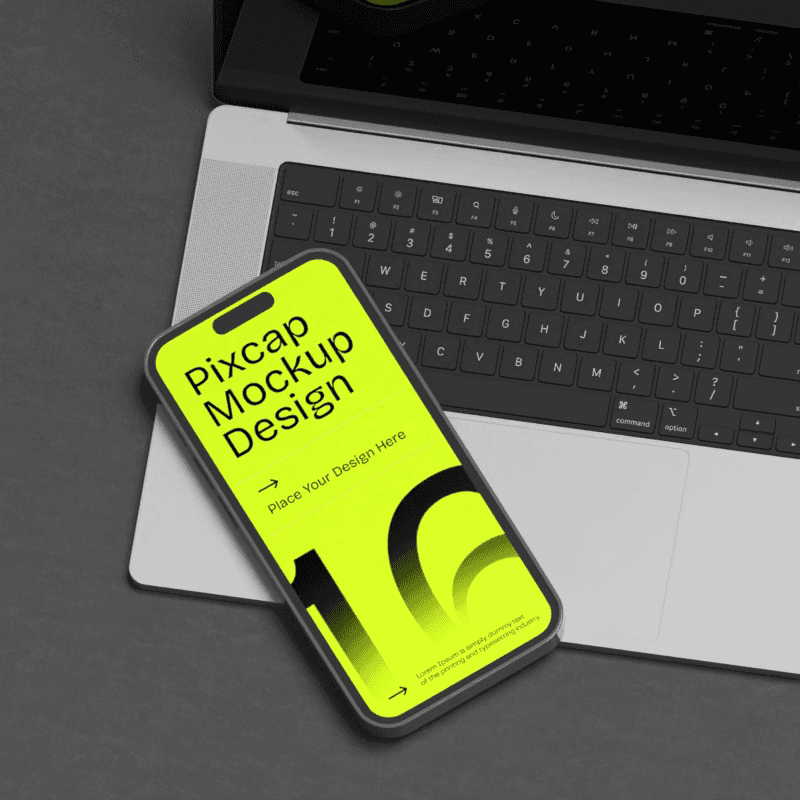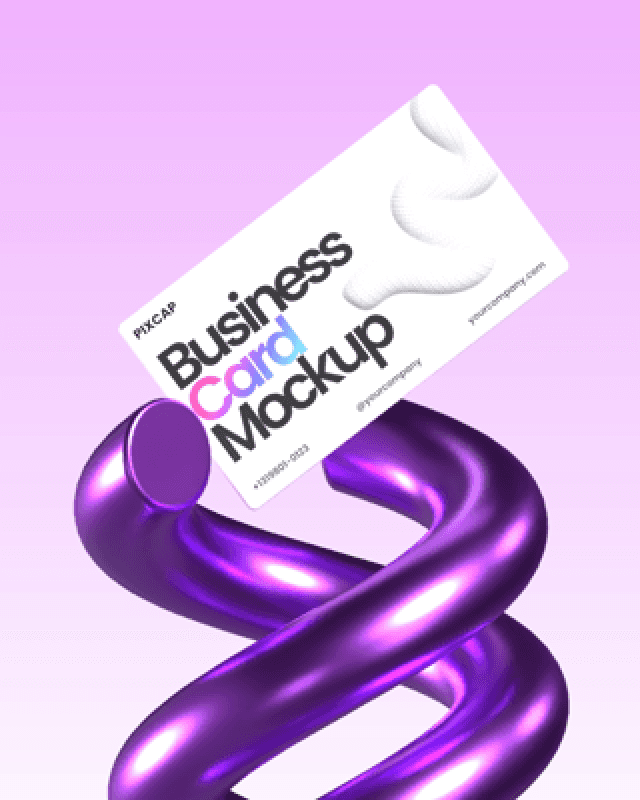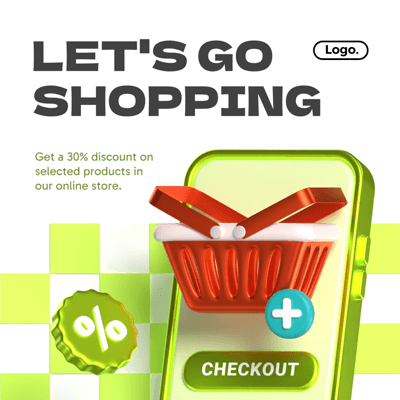Imagine stepping into a digital realm where the boundaries between reality and virtuality blur, creating an immersive experience that captivates your senses. This is the power of 3D elements in web design—a dynamic approach that breathes life into flat screens and engages users on a whole new level.
Overview of 3D Elements in Web Design
3D elements in web design refer to any visual component that provides a perception of depth. By simulating the three dimensions we see in the real world—length, width, and height—these features transform user interfaces from static two-dimensional snapshots into vivid scenes you feel you could reach out and touch.
Browse Pixcap and download over 10,000 3D elements for web design here.

With technologies like WebGL, sophisticated rendering techniques, and animation frameworks becoming more accessible, embedding these fascinating visuals onto websites has become a game-changer for designers aiming to make their mark online.
Importance of Incorporating 3D Elements for Web Design
Incorporating 3D elements isn't just about show-stopping aesthetics; it's a strategic move to garner attention and convey messages with unparalleled clarity. When users land on your page, you have mere seconds to make an impression. Through clever use of 3D graphics, you can craft memorable experiences that intrigue visitors, urging them to stay longer and explore deeper. By leveraging this compelling form of digital artistry, you deliver not only content but also exhilaration—an experience so stimulating it's bound to leave a lasting impact.
Understanding the Concept of 3D in Web Design
Definition and explanation of 3D web design
3D web design refers to the practice of incorporating three-dimensional visual elements into a webpage. Unlike traditional flat designs, these elements provide depth and volume, creating a sense of space that can be both visually appealing and functional. Examples of 3D elements include:
Graphics that appear to rise from or sink into the background
Interactive models that users can rotate or scale
Visuals that exhibit realistic shading and textures characteristic of three-dimensional objects
By simulating real-world properties, such as light interaction and perspective, these designs offer an immersive experience that encourages users to engage more deeply with content.
Brief history and evolution of 3D in web design
The genesis of 3D in web design dates back to the advent of WebGL technology around 2011. This game-changing browser feature allowed developers to render complex graphics right within the user's web browser without needing plug-ins. Over time, advancements in computing power and graphic rendering capabilities have significantly improved, enabling designers to create intricate and responsive 3D visuals.
Initially used sparingly due to concerns over performance and accessibility, 3D elements are now more widely implemented thanks to optimized frameworks like Three.js. These improvements make it easier for creators to develop compelling 3D experiences that enrich storytelling, convey information dynamically, or simply add aesthetic interest without compromising website speed or functionality. As we increasingly seek out engaging digital experiences over static pages, smart integration of this dimension seems destined not only for further development but also broader application across various online domains.
The Benefits of Using 3D in Web Design
Creating visual impact and standing out from flat design
In a digital universe brimming with websites, standing out can be quite the challenge. That's exactly where 3D elements shine in web design. They break through the visual noise and offer an aesthetic punch that flat designs often cannot match. Here’s why they capture attention:
Depth Perception: Adding a third dimension adds depth, making visuals pop off the page.
Dynamic Presentation: 3D allows for rotations, transitions, and animations that engage visually.
Unique Branding Opportunity: A well-executed 3D design can become synonymous with your brand identity.
By leveraging 3D on your site, you instantly differentiate your online presence, giving visitors a memorable experience as soon as they land on your webpage.
Enhancing user engagement and interaction with more immersive interfaces
An immersive interface is akin to an open invitation for users to explore. When I ponder over what makes some websites unforgettable, it often boils down to how interactively they communicate their content. With 3D elements:
Interaction becomes intuitive as users naturally gravitate towards three-dimensional objects.
Engagement increases because people are curious about seeing things from different angles—much like examining a sculpture.
Storytelling takes flight giving context through dimensionality; it's not just about reading content but experiencing it in space.
In essence, throwing interactive 3D widgets or models into the mix transforms passive observers into active participants making the overall journey on-site not just informative but also enjoyable.
Appealing to visitors' senses and emotions for a better user experience
Imagine the delight of seamlessly navigating through a three-dimensional product catalog or feeling the anticipation as layers peel away revealing new dimensions of a website’s story; this is sensory web design at its best.
To truly tap into visitor emotions through a screen:
Visual Stimulation: Employ vivid textures and realistic shadows to evoke awe or curiosity.
Touch Feedback: Concepts like haptic feedback simulate the sensation of touch even when clicking on screen-based 3D objects.
Auditory Cues: Complementing visuals with spatial sound enhances the immersion factor further, forging emotional connections.
Such approaches mean we’re not just designing websites: we're creating experiences that resonate deeply on an emotional level thus fostering positive associations with the brand.
Increasing conversion rate optimization (CRO) through enhanced visuals
Finally yet importantly, good design is not only about aesthetics—it’s also about function. Incorporating 3D elements effectively increases CRO by guiding visitors’ eyes towards calls-to-action and evoking responses that flat images seldom provoke.
Here’s how stellar visuals aid in converting visits to actions:
Highlighting Products/Services: Rotatable models give consumers control leading them closer to purchase decisions.
Breaking Down Complexity: Complex information feels graspable via interactive diagrams or explorable spaces.
Visual Clarity Ensures Actions: Users less likely hesitate when clear graphical cues point them toward next steps – be it signing up or checking out.
Craftily used, these revamped visuals don't merely adorn but convert; turning viewers into users, shoppers into buyers—a true measure of successful web design confluence of form meeting function right there on your screen.
10 Inspiring Examples of 3D Web Design
A picture is worth a thousand words; in the realm of web design, a well-crafted 3D element can be priceless. Embracing this philosophy, let's delve into ten standout examples where 3D elements in web design not only enhance visuals but also engagement and user experience.
Robert Bürgel

Stepping into Robert Bürgel's online portfolio is akin to entering an interactive art gallery. His use of 3D elements allows for dynamic storytelling, inviting users to explore his world of graphic design and illustration through a tactile digital landscape. This site exemplifies how subtle motion and depth can add sophistication without overwhelming the viewer. Each project featured on the website is presented as a spinning artifact, encouraging interaction while conveying Bürgel’s artistic prowess.
Flux Academy

Flux Academy takes educational websites to another dimension—literally. As you navigate through their offerings on web design courses, you're met with floating islands that represent different learning paths—a clever creative use of 3D elements designed to capture imagination and curiosity. Through these immersive environments, potential students can visualize their journey into the world of design before they even enroll.
TAG Heuer

Luxury brands like TAG Heuer utilize high fidelity rendering transporting viewers close enough almost feeling texture against skin whispers prestige resonated thoroughly each rotation subtly coaxes desire illustrating class doesn’t shout it enchants amplified by understatement ever-present website strolls confirming elegance indeed lies restraint serving aspirational goals exquisitely preceded tactful emphasis quality craftsmanship evoked splendidly web format space afforded by thoughtful application sophisticated serve as tangible evidence finesse infused every component composition heralding era tech alongside timeless allure intrinsic valuable items marketed innovatively .
Designing a 3D Website that Attracts Visitors and Builds Engagement
Crafting a 3D website is no small feat. It's where aesthetic appeal meets functionality, creating a digital space that not only captivates visitors but also engages them deeply.
Planning the design and layout of your 3D website
Designing for the web in three dimensions starts with envisioning the journey you want your users to embark on. It's imperative to adopt a strategic approach:
Define clear objectives: What do you wish to achieve with your 3D design?
Sketch out user pathways: Consider how users will navigate through your site.
Balance creativity and usability: While being innovative is crucial, never sacrifice user experience for flashy effects.
First impressions are pivotal; ensure that the entry point into the 3D environment is intuitive and inviting. As you plan, remember accessibility. Users should feel guided through the space without feeling overwhelmed by complexity or disoriented by navigation.
Choosing the right software and tools for creating 3D elements
Selecting appropriate software is crucial when it comes to crafting those stunning 3D elements. There's a plethora of tools available, each outfitted with unique features fit for different types of projects.
For model creation:
Blender offers comprehensive modeling tools free of charge.
Autodesk Maya excels at detailed animation capabilities (perfect for moving graphics).
For rendering:
Cinema 4D gives impressive visual outcomes with user-friendly interfaces.
Unity merges interactivity with high-quality visuals effectively.
It may take you days to weeks to create 3D designs but on Pixcap you can find all 3D elements necessary for web design and customize colors, textures, and sizes to your needs, with no technical skill needed.
Creating 3D models and graphics for your website
Creating lifelike or stylized graphics sets apart an ordinary user experience from an extraordinary one. Dive into sculpting models that align with your brand's identity.
When creating these assets:
Start simple: Build basic shapes first before adding intricate details.
Optimize continuously: High-resolution models are eye-candy but prioritize performance by retaining necessary details alone.
Expert tip: Always texture map smartly! Textures bring realism but can be heavy on load times if not optimized correctly.
Remember consistency too — unifying visual style prevents cognitive dissonance and ties together different sections seamlessly.
Building and optimizing your 3D website
Showcasing those breathtaking models requires a robust build phase followed by thorough optimization practices:
Test extensively across devices to ensure consistent experiences.
Employ compression techniques such as glTF format for models — they maintain quality while trimming down file size.
Additionally, be vigilant about loading times; integrating lazy-loading or offering intriguing preloaders can keep users engaged during waits.
Optimizing doesn’t end post-launch—collect data, gather feedback, tend to necessary tweaks regularly maintaining unparalleled performance at all times.
Enhancing user engagement through interactive features
The potency of a compelling narrative coupled with interactive elements cannot be overstated in achieving engrossment within your site:
Introduce motion-triggered animations - subtlety can have substantial effects!
Engage touchpoint interactivity - let users manipulate objects or navigate scenes dynamically.
Surprise users pleasantly; novelty in interaction drives longer stays on pages — beneficial both experientially and analytically as dwell time increases.
Publishing, promoting, and maintaining your 3D website
Launching is just the beginning of the journey:
After publishing:
Monitor technical performance closely — quick resolutions to any hiccups retain trustworthiness in user view.
Update content periodically; freshness attracts return visits.
For promotion:
Highlight uniqueness across social platforms drawing curiosity—visual snippets work wonders here!
Implement good SEO practices ensuring visibility amidst vast webspace rivals.
Lastly maintenance—a stalwart monitoring process guarantees uptime optimization keeping engagements continuous over timeframes long-term wise!
Inventiveness married to pragmatism leads successful ventures upon this twine-designed-with-depth digital scape realm!
Limitations and Considerations for Using 3D in Web Design
Adding depth and dimension with 3D elements can transform a mundane web page into an immersive virtual experience. However, such sophistication comes with its set of challenges. As designers or web developers, it is critical to be mindful of these constraints to ensure that the allure of 3D doesn't compromise the website's functionality and accessibility.
Performance implications and optimization techniques
When it comes to integrating 3D elements, performance should be at the forefront of your considerations. High-quality 3D graphics demand significant computational power, which can lead to increased loading times and potentially hinder the user experience.
Progressive enhancement – This strategy involves providing a basic version of your content that can scale up based on the capabilities of each user's device.
Level-of-detail (LOD) models – LOD involves creating multiple versions of a model at different resolutions. The browser can then serve the most suitable version depending on the user's device capabilities.
WebGL and hardware acceleration – Utilizing technologies like WebGL facilitates rendering 3D graphics efficiently by leveraging a device's GPU.
Compression techniques – Optimizing multimedia files including textures and models through compression without significantly losing quality helps maintain fluidity in site interactions.
Implementing these approaches cuts down resource usage while maintaining a visually appealing design, ensuring users don't grow frustrated with sluggish performance.
Compatible devices and browsers for viewing 3D elements
Despite advanced web standards, not all browsers or devices are created equal regarding 3D support. With varying degrees of compatibility across platforms:
Browsers: Most modern browsers like Chrome, Firefox, Safari, and Edge have quite robust support for WebGL which enables them to handle complex 3D graphics effectively.
Devices: Desktop computers usually boast higher processing powers compared to mobile devices; therefore they tend to render high-quality 3D visuals more smoothly.
Ensuring cross-device compatibility means performing rigorous testing across numerous browser/device combinations. You may also consider feature detection libraries to determine in real-time if a user's device supports specific 3D features—supplying alternative content when necessary.
Accessibility considerations in implementing 3D elements
Accessibility isn't just about adherence to guidelines; it reflects inclusiveness in your design philosophy—a crucial factor often overlooked in the visual-centric world of 3D.
Here are key points on making your fancy three-dimensional experiences accessible:
Ensure navigational simplicity within your UI even when using intricate models.
Provide text descriptions for complex visuals catering to screen reader users.
Avoid reliance solely on color differentiation as this might isolate visitors with color vision deficiencies.
By conscientiously blending aesthetics with accessibility principles, you create designs that aren’t merely captivating but inclusive too—reaching wider audiences without unintentional exclusion due to technological flare-ups or physical hindrances.
Future Trends and Innovations in 3D Web Design
As we peer into the crystal ball of web design, it's evident that the landscape is continually shifting. Advances in technology are the bedrock upon which 3D elements in web design will scale new heights. Let's explore some of these cutting-edge technologies poised to redefine our digital experiences.
Emerging Technologies Shaping the Future of 3D Web Design
The realm of web design has always been dynamic, but with 3D capabilities, it adopts an entirely different dimension—quite literally. Several emerging technologies are on track to dramatically enhance how we employ 3D designs:
WebXR: This API is a game-changer as it enables the creation of virtual reality (VR) and augmented reality (AR) experiences directly within a browser. It facilitates more immersive environments where users can interact with 3D objects in real-time.
WebGL™: The latest iterations of this JavaScript API will unlock even higher performance rendering for complex scenes and animations, making them smoother and more lifelike than ever before.
AI-driven design tools: Artificial Intelligence (AI) in web design isn't just about automating tasks; it's also about creating smarter 3D models that can adapt to user preferences, leading to personalized online spaces.
Cloud-based rendering: As cloud computing power escalates, so does its capability to handle demanding graphic computations. We'll likely see more high-fidelity 3D designs being rendered server-side then smoothly streamed onto devices.
This intersection between innovations promises significant evolution in web design capabilities. By harnessing these technologies, designers will not only craft more visually stunning websites but also deliver unprecedented interactive experiences to users.
Potential Applications and Industries Benefiting from 3D Web Design
While many industries have started dipping their toes into 3D web design waters, some are set to make waves with its full potential:
E-commerce: Online stores can revolutionize shopping by offering customers life-like product visualizations; imagine viewing products from every angle or seeing how they fit into your space via AR before making a purchase.
Real Estate: Virtual property tours using 3D walk-throughs will become commonplace —providing a feeling of physical presence that flat images lack.
Education: Interactive models and simulations leveraging 3D visuals can enrich learning experiences across disciplines like biology, astronomy, or engineering.
Healthcare: From detailed anatomical explorations for educational purposes to explaining procedures through 3D diagrams—healthcare websites stand to gain significantly from depth-enhanced graphics.
In essence, any field where visual storytelling is paramount or where engagement plays a crucial role could strongly benefit from integrated 3D components.
Coupling technological advancements with creative innovation propels us towards a future wherein the fabric of web design may well be intertwined with three-dimensional constructs. Through clever integration and attention to both aesthetic appeal and functionality, the next wave of websites will undoubtedly provide richer narratives and user journeys fuelled by these incredible possibilities.
Final thoughts on the future of 3D web design
Looking ahead, the trajectory for 3d elements in web design arcs towards ever-more sophisticated horizons. Emerging technologies like virtual reality (VR), augmented reality (AR), and artificial intelligence (AI) promise even richer interactive experiences that will further blur boundaries between digital spaces and the physical world. This evolution beckons designers and brands alike to dive deep into innovation while navigating this burgeoning realm responsibly.
From shining fresh light on product showcases or art installations to creating environments for e-learning platforms that captivate imagination — the possibilities seem endless. As devices continue to evolve in power and capability, compatibility concerns may diminish over time, further lifting limits off what can be achieved through 3D designs online.














